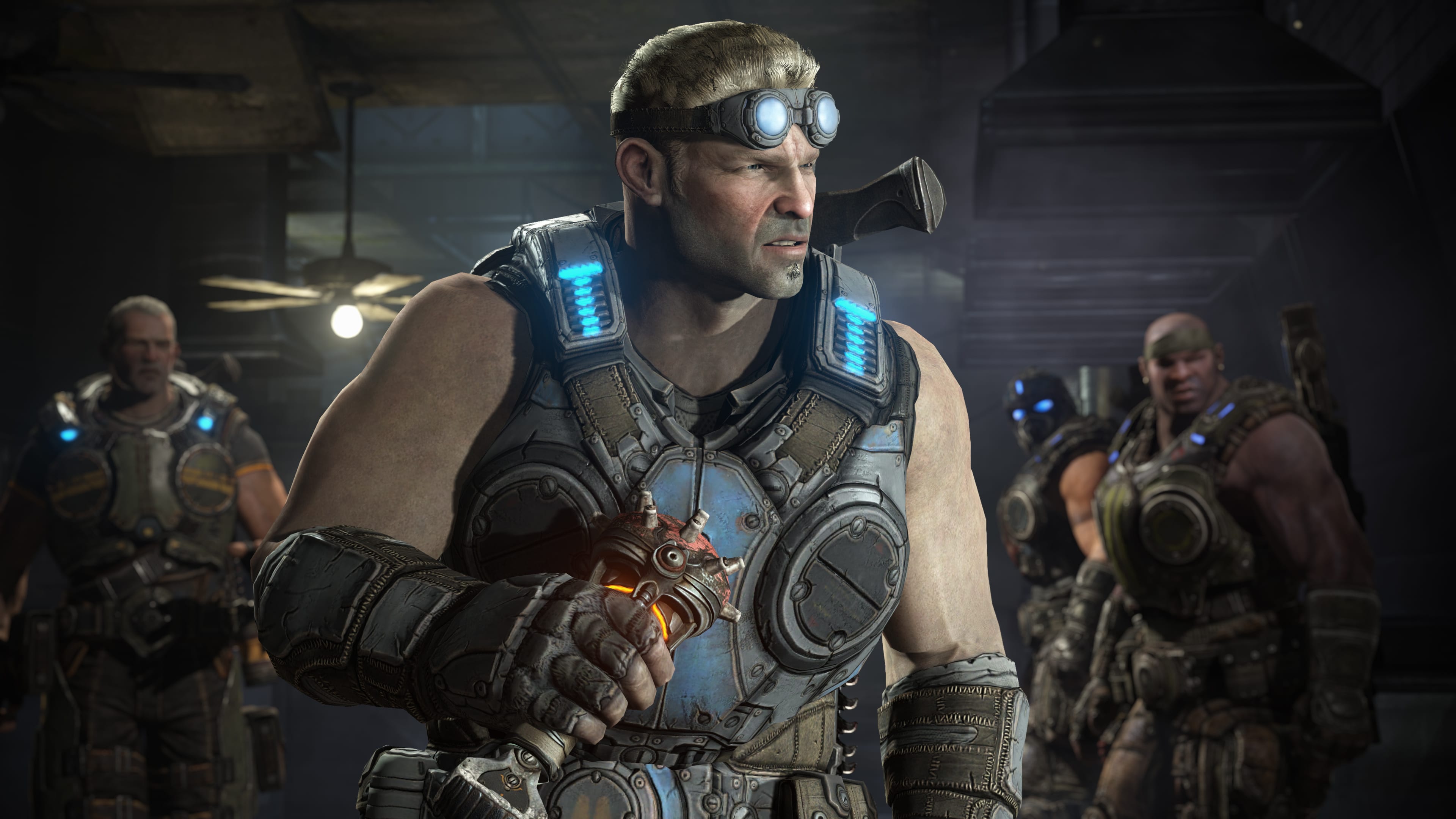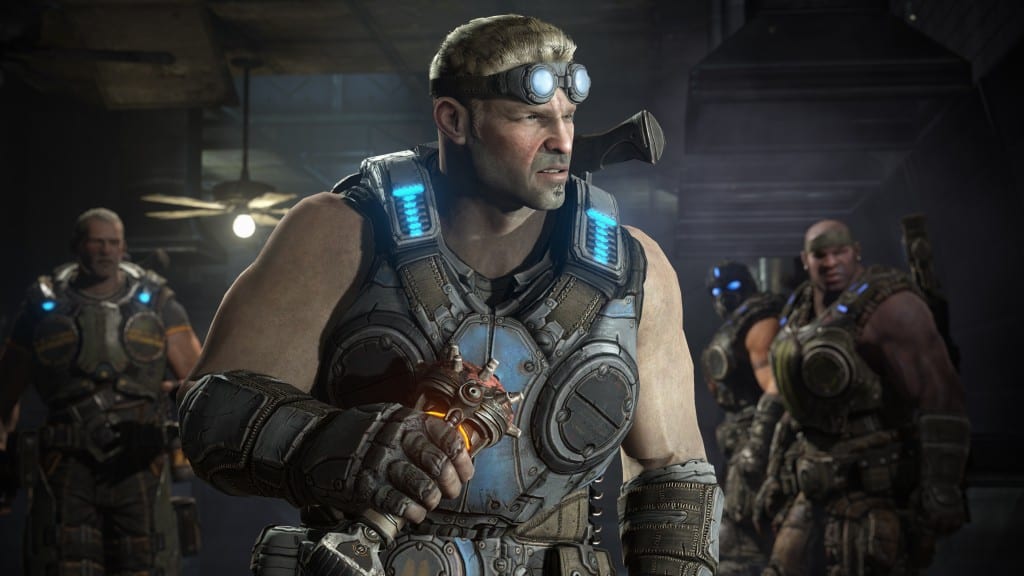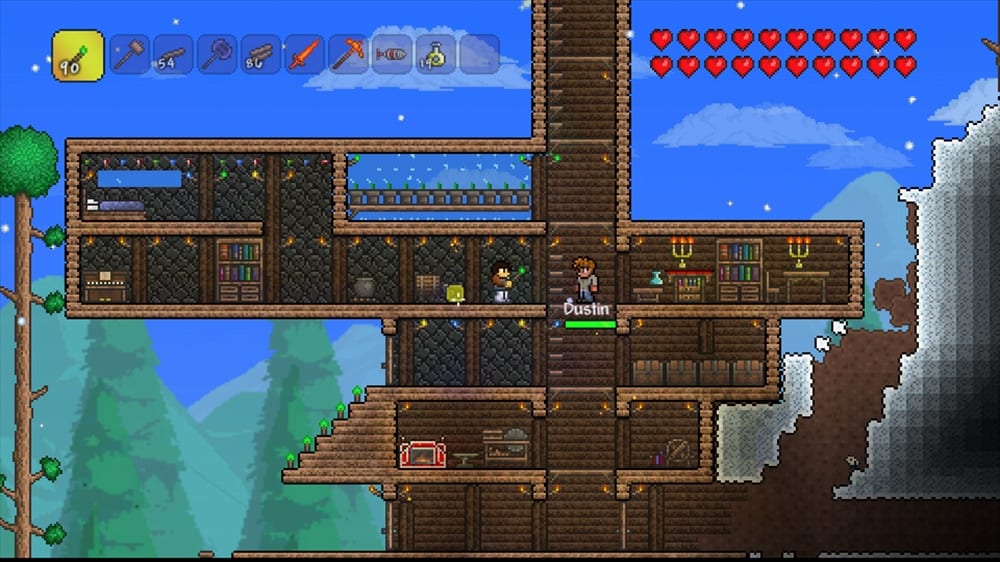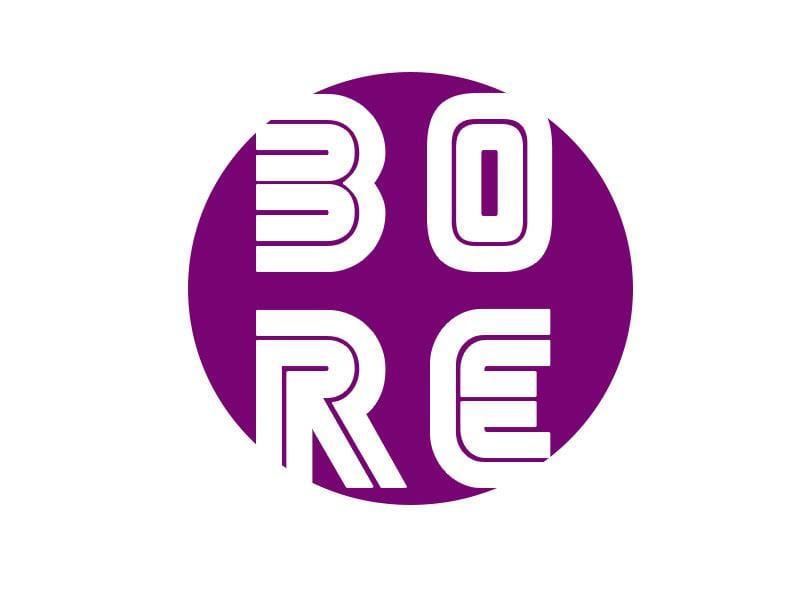Review: Gears of War: Judgment

There’s no denying that the Gears of War trilogy was epic. The satisfaction of taking down a Berserker with a perfectly-placed shot to the head and overcoming General Raam are moments that will stay with gamers for years to come. Riding on the success of the series, a prequel was announced during Microsoft’s conference at E3 2012 entitled Gears of War: Judgment.
Developed by Epic Games and People Can’t Fly, the events of Gears of War: Judgment takes place prior to the original Gears of War, as Lt. Damon Baird and his team recall the events leading up to the hearing at a COG military tribunal for the unauthorised use of a lightmass missile. Each recollection comes from a different member of the team, which consists of Baird, Augustus Cole, Sofia Hendirk and Garron Paduk.
The campaign is brilliantly written and will keep viewers engaged throughout its entirety. However, the single player storyline can easily be finished within a number of hours, especially on the easier difficulties.
To add an additional challenge to each section of the game, players can choose whether or not to take on declassified missions. Such missions include being restricted to certain weapons, completing the mission in a time limit and additional or stronger enemies. The reward for successfully declassified missions is additional stars, which unlock rewards comprising of weapon skins and new characters.
Collectibles during the campaign come in the form of COG tags, which are scattered throughout the game’s levels. While there’s no in-game reward for successfully gathering all forty-eight, there are three achievements on offer, worth a total of forty GamerScore.
In purchasing Gears of War: Judgment, players receive two campaigns for the price of one. Titled Aftermath, the game’s second campaign gives players an extra dimension to the Gears of War 3 storyline. Its longer missions and increased pace demonstrate the clear differences between the two titles, and the additional campaign is a great addition to the title.
Both campaigns can also be played with additional players, with support for two players locally and up to four players over Xbox Live. While there are no real benefits to the co-operative campaign, it makes a welcome change to playing with the sometimes unreliable AI.
Multiplayer extends to Survival – a brand new game mode which works similarly to Horde, evident in Gears of War 2 and Gears of War 3. The game mode sees COG soldiers defending a series of objectives from waves of enemies, which get increasingly stronger and more difficult to overcome as player’s progress.
Prior to spawning and respawning, players are able to choose one of four classes: Engineers (who are able to deploy sentries and repair fortifications); Medics (who can heal and revive themselves and allies by deploying Strim-Gas Grenades); Scouts (who can access elevated sniping positions and reveal enemy locations by deploying Spot Grenades) and Soldiers (who can deploy ammo for themselves and their allies). Each class has its advantages and disadvantages on the battlefield.
Whereas the game mode can be played solely, it really comes to life with multiple players, as gamers can use the classes in each other’s favour. Survival can also produce some tense and thrilling moments that come with either a rewarding feeling of satisfaction or a sense of despair.
The same game mode can also be played in competitive multiplayer as part of OverRun – another new addition to the series. The only difference between the two game modes is that gamers also play as the Locust, as they take it in turn to attack and defend the objectives. Like Survival, the game mode is a fantastic addition to Gears of War Judgment, and will be extremely popular among players new and old.
In addition to OverRun, Domination, Execution, Free-for-All and Team Deathmatch all make a welcome return, with very little in the way of changes.
Gears of War: Judgment contains nine maps in total, four which are exclusive to OverRun and Survival, with the remaining five assigned to the other game modes. Each map has been brilliantly designed to incorporate a mix of close combat battles and long range attacks. However, the lack of maps on offer will come as a disappointment to some players, something that is more than likely to be rectified through downloadable content.
The gameplay in Gears of War: Judgment remains almost identical to its predecessors; with players ducking and diving into cover by pressing the A button, although returning players will have to adjust to the new controls. Y is now used to switch between weapons (previously the D-pad), with grenades now controlled using the left bumper. At first, it’ll take veterans some getting used to and it can be the crucial mistake on the battlefield, though it’s something they will adjust to in time.
As the Xbox 360 approaches the end of its life cycle, it doesn’t come as much as a surprise to say that Gears of War: Judgment looks remarkable. Whereas previous Gears of War titles have graphically looked grey and slightly dull, the colour palette for the latest instalment really brings the game to life. Likewise, the game’s soundtrack, composed by Steve Jablonsky, makes for fantastic listening, and the dialogue and sound effects are to a similar standard.
Overall, Gears of War: Judgment is a brilliant addition to the Gear of War series. While some gamers may question whether the short campaign and the few changes to the multiplayer is worth the hefty price tag, there’s hours of enjoyment to be had, just like its predecessors also offered. With the inevitable summer drought approaching, this is most definitely a game to consider purchasing.
[Originally posted on Console Monster]





